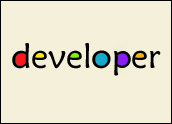
Google and Salesforce.com have rolled out a Force.com toolkit for Google Data application programming interfaces that’s designed to help developers integrate Google Apps data and content with Force.com’s database, logic and workflow capabilities.
These open source tools and services, which are modeled after the Java Client library for Google Data, expose Google APIs — starting with Spreadsheets, Documents and Calendar — directly within Apex, making it easier to access them natively from Force.com apps.
The point is to provide tighter integration between the platforms with less effort — and thus encourage developers to create applications geared for the Google-Salesforce.com joint offerings, Yankee Group analyst Sheryl Kingstone told CRM Buyer.
Extended Collaboration
Prior to this release, the two companies were offering tools that targeted Salesforce.com products, Kingstone explained. “Now, any custom application built on its platform can be integrated into the Google product line.”
From an industry perspective, the toolkit means the companies are continuing to collaborate on integrating their dual product offerings. “It’s another step in their evolving relationship,” Kingstone said.
In April, they introduced Salesforce for Google Apps, a product that combines Google’s suite of productivity applications with the on-demand customer relationship management application.
A year prior to that, the two kicked off their partnership with the release of Salesforce Group Edition featuring Google Adwords.
Steady Supply
For end users, the toolkit’s release will mean a steady supply of new Google-related business applications that can be downloaded from AppExchange. Already, six of the top 10 applications on this marketplace are Google-related partners, according to Salesforce.com.
For example, CODA, a European financial applications provider, has built a Web application prototype that takes data from Google Spreadsheets, ports it into its Order-to-Cash module of CODA 2go — a financials application built on Force.com — and then performs a cost allocation over extracted transaction details from CODA 2go.
The results are displayed via a Visualforce-powered Google Gadget. It took the firm “just a few weekends” to develop the application, according to Jeremy Roche, CEO of CODA.






















































